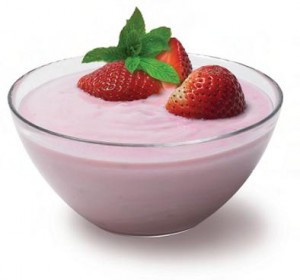 Written by Alice G. Walton
Written by Alice G. Walton
If you’re not a big fan of the holidays, don’t worry – you’re not alone. This time of year can spark all kinds of unexpected reactions and behaviors in even the most well-adjusted among us. There’s the loneliness, the anxiety, the guilt, the overindulgence (which can also lead to guilt), and, of course, the bitterness. And to top it all off there’s the looming New Year, which is always disturbing since it hits us with the pressure of developing good habits right after we’ve fully exercised our bad ones.
So, let’s be honest about how easy it is to get wigged out this time of year. Here are some of the common holiday pitfalls, mental and physical, which many of us encounter in some shape or form. And, so as not to be too Grinchy about it, there’s also a bit on how to avoid them – or at least, manage them more effectively when they come your way.
1. Overeating
This is the queen mother of the bad holiday habits. Most of us pack on a few pounds in the Halloween-to-Christmas stretch, but it doesn’t have to be that way, even at food-centric holiday gatherings. Forbes contributor David DiSalvo, who wrote Brain Changer, says that there’s one trick researchers discovered in a 2010 study that can help people avoid holiday bingeing – and it’s simply to visualize the bingeing before you do it. “When you see something you’d like to gorge on but know you shouldn’t (let’s say a big bowl of M&Ms),” says DiSalvo, “try visualizing yourself eating the M&Ms – as many as you care to shovel into your mouth, being careful not to spare any details about how incredible they taste. The research predicts that afterwards you’ll eat less of the candies than you would have if you’d given in to your original desire to gorge without playing the mind trick.” It sounds counterintuitive, but giving your brain that imaginary taste of the hedonism it so desires can actually fulfill the craving. So give it a try, and see if it does the trick.
2. Holiday Depression
With all the pressure to be happy this time of year, it’s not hard to be depressed. This is especially true if you don’t have exciting plans, or any plans. On the other end of the spectrum, having too much to do can also be mentally depleting. Psychologist Suzanne Roff-Wexler, PhD, says that though it can be tough to tease apart all your feelings at this time of year, the holidays – with all their demands and stressors – are classic triggers for anxiety and low mood. “The holiday period can be stressful…. Parties, gift giving, food and alcohol intake, time demands and deadlines add to the stress. In addition to stress, some begin to feel a sense of sadness and loss – psychologists think of this as ‘holiday blues,’ which is time-limited and not in itself clinical depression. As the holidays end, the blues typically recede.”
She adds that if the sadness sticks around for weeks or months after the holidays end, it could be actual depression, which needs treatment. But if it’s just depression about the fact that the holidays, well, exist, then the solution is pretty simple: Just power through them. Being social as much or as little as you want to, taking time for yourself to recoup and re-center, and practicing a little gratitude about the good things in your life (even if it’s just that the holidays will be over soon) are all powerful methods for coping. Roff-Wexler says that all the holiday hoopla “can take a toll on your mind and body…So don’t isolate. Seek connection and support.” Most of all, take heart: They’ll be over soon.
3. Overspending and Debt
Advertisers take no prisoners when it comes to pushing the holidays on us these days, which can make it easy to get sucked in to overspending. Though it’s great to be generous with your loved ones, if you’re able, a lot of us just do too much. Period. Going into a lot of debt for the holidays is not a good idea, since you’ll pay the price, literally, for months or years to come. Only get gifts for those in your immediate circle of friends and family, and cards for the outer circle. And try, if you can, to pay for most things outright, rather than with credit cards. It may not be completely possible to avoid debt, but a little is better than a lot.
4. New Year’s Eve Dread
An especially grating reality of the season is that the New Year is lurking just around the corner. Although this can be a nice time of the year to start over for some people, others just feel a sense of doom, whether it’s about New Year’s Eve, having to hear Auld Lang Syne, or the New Year itself. There’s lots of research suggesting that most people fail their New Year’s resolutions by about week two, and this just gets things off to a bad start. But if you’re a secret New Year’s hater, take heart: There are many of us out there, and there are some simple solutions to avoid the New Year’s stress.
One way is simply not to make any resolutions in the first place. There’s no reason to start a new lifestyle habit or kick an old one on January 1st. Do it when you’re good and ready. And if you are going to make changes, think deeply about why you’re doing it. If you’re just saying you want to lose weight because you know you “should,” go a little further into your motivations. Are you doing it for your kids? Maybe it’s because you want to be able to get down and play with them better, or be around for them longer. Writing out the things that are really driving you can help you remember (especially during times of weakness) why you’re making changes in the first place.
Taking baby steps – really small and regimented ones – is another trick for making changes actually happen. Marian Margulies, PhD, a child and adult psychologist in Manhattan, says make specific, small steps, rather than sweeping, general statements. “Rather than say you will lose weight, you might say, ‘I will join a gym this week.’ Next week, ‘I will go at least one time,’ and then twice the week after. A loftier goal to aspire to can be going two to three times a week to the gym.” But that can come later – first break down your goal, and create manageable, teeny steps to get it going.
5. Kids Will Drive You Crazy
A major problem with the holidays is the kid pressure. “Parents often complain to me that their kids demand the latest hot item,” says Margulies. “with the rationale, ‘all my friends got it!’” But she says do not fall into the “but he’s getting it!” trap. And stay strong. “Much as they won’t admit it, children appreciate gifts of time and thoughtful presents and the price tag does not have to factor in here. If your child longs for a gift that is beyond your budget, you might say, ‘this is what I can do’…. Meaningful gifts might include taking your child to a special show followed by dinner at their favorite restaurant. A gift packed with meaning and special thought goes a longer way than spending excessively on items popular this time of year.”
Stress to your kids the real things – the value of family time, gratitude, and helping others who may not have as much. Of course, they may not like you at the time (they may actually hate you a little), but in the long-run, they’ll be the better for it.
6. The Holiday “Attitude”
People who go holiday-crazy can feel a kind of anticlimax or emotional emptiness during or after. “Advertisers show us a Christmas season full of romance, extravagant wealth, wholesome family cohesiveness, and major celebrations with friends that can cause you to feel inferior by not living up to a hyped image,” says Roff-Wexler. But if you’re not feeling everything you think you “should,” don’t overdo it by faking it. “One danger is in trying to overcompensate with an attitude of entitlement that’s obnoxious! The media’s image of the holidays can also underscore feelings of loneliness and low self-esteem.” Remembering what the holidays are actually about – family, love, togetherness, re-centering (and other things, depending on your religion) – is important in making through the season in one piece.
7. Household Accidents and ER Visits
The guy dangling by his foot by the Christmas lights he’s trying to hang on the roof is a classic holiday image. And it’s actually not so farfetched: Household accidents increase quite a lot around the holidays, as do ER visits. The CPSC.gov estimates 15,000 holiday-related accidents, with at least 12,000 ER trips. So be careful, and take care of yourself and your kids, so you don’t end up spending the holidays at the hospital.
8. An Eggnog to Take the Edge Off?
Drinking too much is pretty common around the holidays, whether it’s to celebrate the festivities or take the edge off schmoozing with colleagues or family members you’d rather not be spending your free time with. Constance Scharff, PhD, Senior Addiction Research Fellow and Director of Addiction Research for Cliffside Malibu, points out that at this time of year, “it’s not just those with drinking problems who overindulge. Those who do not often drink can find themselves having a little too much at parties, when they’re having fun or when they are under stress. A good rule of thumb is not to drink alcoholic beverages at all at a work gathering. That is not the place to tie one on.” She says that a good rule of thumb is to limit yourself to two drinks total, and no more than one an hour, at social functions.
9. The Holiday Office Minefield
Another classic and oft-dreaded event is the Holiday Office Party, which is even riskier if it offers endless free drinks. Roff-Wexler points out that ending up in bed with your colleague is no way to end the year. “Holiday office parties can be dangerous when potentially decreased inhibition leads to detrimental personal and/or professional consequences such as inappropriate workplace affairs, bullying, or competition. You can also damage your reputation with a drunken ego.” Use the two-drink rule to get through this one, or even better to ensure your reputation – don’t drink at all.
10. Family Stress
If you have a great, supportive, sane family, by all means skip ahead. For many people, spending time with the family or extended family is a mixed blessing, or just incredibly painful. Getting quizzed by Aunt Mildred about your relationship status, your job, or your irritable bowel syndrome are just some of the reasons we hate holiday gatherings. Drinking to get through these get-togethers is not the best way (refer to #8). If you’re in the “I can’t stand my family” boat, making an appearance for a little bit, making the rounds, and then politely skipping out, saying you have another commitment to get to, is a better (and mentally healthier) way to get through it.
11. Unrealistic Expectations
And on the flipside, let’s be honest, the holidays don’t make everything better like they do in the movies. “We like to think that this year is going to be different,” says Scharff, “that the uncle who is an alcoholic will somehow not be inebriated at Christmas dinner, or the work holiday party that is always stressful and awkward will somehow magically change.” But things don’t usually work out like they do in A Christmas Carol, and acknowledging that reality is much healthier than hoping for a scenario that is probably not going to happen. “People and situations are what they are – and we need to recognize that going into the season,” says Scharff. “If we adjust our expectations, we’ll have a better time enjoying the gifts of the season.”
12. Being A Mall Santa
Tens of thousands of kids sit on Santa’s lap every year in the mall or department store. Forbes editor Dan Bigman wondered whether mall Santas might pose any health risks. While there’s no hard science on the subject (that I’ve found anyway), considering how many children he comes into contact with every day, it’s certainly plausible. Among the possibilities, Mall Santa could be a carrier for viruses (the common cold, flu, and stomach flu), bacteria (staph), and larger creepy-crawlies that it’s better not to even think about.
Aside from the organisms your kid might be contracting, the experience of waiting in the mile-long Santa line is enough to stress out any sane adult. But just as with any other item in the Holiday Unhappiness arena, just breathe through it, and accept it for what it is. Don’t hope for too much, but don’t freak yourself out preparing for the worst. And keep in mind the most comforting advice of all: It’ll all be over soon.
Follow on @alicewalton or Facebook.
 Written by cancer.org
Written by cancer.org








